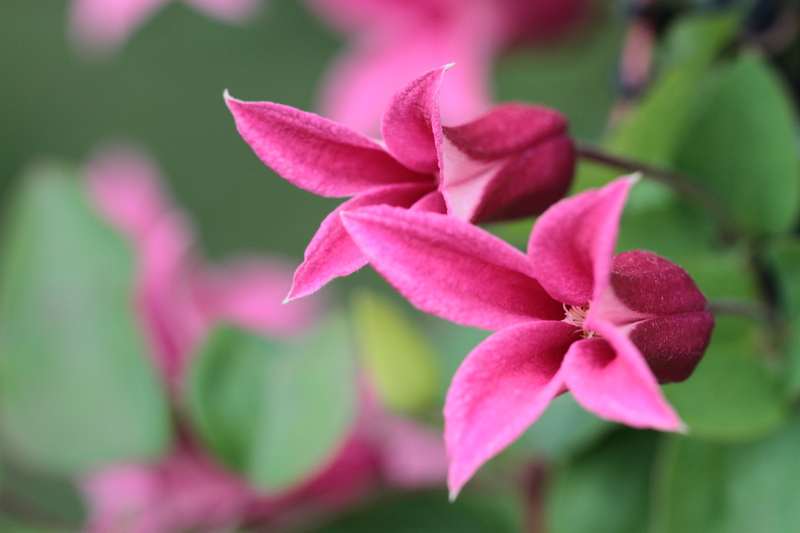DIY Guide to Perfectly Sharpening Garden Shears at Home
Posted on 14/10/2025
DIY Guide to Perfectly Sharpening Garden Shears at Home
Well-maintained garden shears are the backbone of every tidy and thriving garden. Dull blades can make pruning challenging, injure your plants, and turn an enjoyable task into a frustrating chore. Luckily, you can restore your garden shears to like-new sharpness with a few simple tools and some methodical care. In this comprehensive DIY guide, we'll walk you through how to sharpen garden shears at home perfectly--ensuring every cut is clean and precise.
Why Sharpen Your Garden Shears Regularly?
Just like any gardening tool, your shears will eventually lose their edge due to use. Dull shears can damage plants by crushing stems rather than making clean cuts, increasing the risk of disease and impeding healthy growth. Additionally, using blunt shears can tire your hands more quickly, making gardening an unenjoyable task.
- Promotes healthy plant growth by making clean, precise cuts.
- Reduces risk of plant disease due to ragged or torn stems.
- Extends the lifespan of your shears by maintaining the blade edge.
- Makes gardening easier and more enjoyable.

The Best Time to Sharpen Your Shears
Understanding when to sharpen your garden shears is essential. You should inspect your shears before and after major pruning jobs or at the beginning and end of gardening season. If the blades feel dull or struggle to cut cleanly, it's time for maintenance.
Signs your garden shears need sharpening:
- Blades crush or tear plant material
- Visible nicks or burrs on the blade
- Rust or sap buildup affecting performance
- Shears require excessive force to operate
Tools & Materials: What You'll Need
Before starting your DIY garden shears sharpening project, assemble the following tools and safety materials:
- Sharpening stone (whetstone) - Coarse and fine grit work best
- Metal file - For removing nicks and reshaping edges
- Sandpaper - For cleaning rust; 120-220 grit preferred
- Clean rag and water - To wipe down tools
- WD-40 or blade oil - For lubrication and protection
- Protective gloves - To keep your hands safe
- Phillips or flathead screwdriver - If you need to disassemble
- Safety goggles - To protect your eyes from debris
Step-by-Step Guide: Sharpening Garden Shears at Home
With your tools ready, follow these steps to perfectly sharpen any pair of garden shears. The process is suitable for bypass shears, anvil shears, loppers, and hand pruners.
1. Clean Your Garden Shears
Before sharpening, it's important to clean the blades thoroughly to remove dirt, sap, or rust. Use soapy water and a scrubbing brush or steel wool. For persistent rust, gently rub sandpaper over the spots, being careful not to damage the blade.
- Remove debris and sticky residue with soap and warm water.
- Scrub off any rust using sandpaper or steel wool.
- Dry the shears completely with a clean rag.
2. Disassemble the Shears (if necessary)
For a more thorough sharpening, many gardeners prefer to take their shears apart. This makes it easier to access the full blade edge. Simply remove the central bolt with a screwdriver. If your shears are riveted or fixed, you can still sharpen them carefully without disassembling.
3. Secure the Shears for Sharpening
Wear your protective gloves and, if possible, secure the blade using a clamp or vice. If you don't have a vice, holding the handles firmly on a work surface works fine, but always keep your sharpening motions away from your body.
4. Sharpen the Blade Using a Whetstone
Moisten your whetstone with water or sharpening oil, then locate the original bevel angle of your shears. Most garden shears have a bevel of 10-20 degrees. Maintain this angle throughout the process:
- Position the blade: Place the beveled edge of one blade against the stone at the correct angle.
- Sharpen in one direction: Move the blade along the stone, pushing and sliding it away from you in a sweeping motion. Do not saw back and forth--always move in the same direction.
- Work the entire blade: Cover the whole edge evenly, from base to tip. Apply gentle, consistent pressure.
- Check the burr: After several passes, you may feel a slight burr (raised metal) on the backside, indicating sharpening is working.
Repeat this step with the fine grit side of the stone for a polished, razor-sharp edge.
5. Use a Metal File for Severely Dull or Nicked Blades
If your shears are extremely dull or have visible nicks, a metal file can quickly restore the cutting edge. Hold the file at the original bevel angle and push it along the blade with smooth, even strokes. Work in one direction until the blade shape is restored.
6. Remove Burrs and Polish the Edge
After the main edge has been sharpened:
- Flip the blade and gently rub the flat (backside) against the whetstone to remove any burrs.
- Use the fine stone or fine-grit sandpaper to polish both sides of the edge.
- Wipe blades clean to remove any filings or grit.
7. Reassemble and Test Your Shears
If you disassembled the tool, reassemble the shears and tighten the bolt or screw securely. Open and close the blades to ensure they move smoothly.
- Test the sharpness by making a few cuts on a piece of paper or a thin plant stem. The blade should make a clean, effortless cut.
- If needed, return to the stone for a few more passes until satisfied.
8. Apply Lubricant
To finish, apply a light coat of blade oil or a spritz of WD-40 over the blades and moving parts. This prevents rust and keeps your shears operating smoothly.
- Repeat lubrication after heavy use or when storing shears for the season.
Common Mistakes to Avoid When Sharpening Garden Shears
While sharpening pruning shears at home is simple, there are a few pitfalls that can reduce your results or even damage your tool:
- Sharpening at the wrong angle - Always follow the original bevel for best cutting results.
- Over-sharpening - Removing too much metal reduces blade life and can change cutting performance.
- Leaving burrs or filings on blades - These can cause blades to dull faster and may injure plants.
- Forgetting to lubricate - Clean, sharp blades still need oiling to protect against rust.
- Ignoring blade alignment - After sharpening, check that the blades are properly aligned for efficient cutting.
Pro Tips for Maintaining Razor-Sharp Garden Shears
Proper maintenance can keep your shears sharp for months at a time. Here are expert tips for prolonging the results of your DIY garden shear sharpening at home:
- Clean blades after every use - Prevent sap and debris buildup.
- Store shears dry and lubricated - Avoid rust and corrosion.
- Sharpen often, not just when dull - A few passes with a fine stone regularly maintains sharpness.
- Tighten loose screws and bolts to keep tool action precise.
- Use protective sheaths or blade covers when not in use.

Frequently Asked Questions About Sharpening Garden Shears
1. How often do garden shears need sharpening?
Most home gardeners should sharpen their shears every 3-4 months or when cutting performance noticeably drops. Professionals or frequent users may need to sharpen more often.
2. Can I sharpen garden shears with a kitchen knife sharpener?
You can, but a kitchen sharpener typically does not hold the correct bevel or cope with the thicker metal of tool blades. Sharpening stones and files are better suited for quality results.
3. Should I sharpen both blades on bypass shears?
Bypass shears usually have one sharpened and one flat blade. Only the beveled (cutting) blade needs sharpening; simply clean and flatten the other side.
4. What if my shears are still dull after sharpening?
Double-check that you are using the correct angle and even pressure. If the blade is badly chipped or excessively worn, it may need professional grinding or replacement.
5. Is lubricating the shears necessary?
Absolutely. Lubrication prevents rust, ensures smooth operation, and extends tool life.
Conclusion: Enjoy Smoother, Healthier Gardening All Year
With your newly sharpened and maintained shears, every gardening task becomes easier, cleaner, and more satisfying. Routine care will not only keep your tools sharp but also protect your plants from unnecessary stress and disease.
Save money and time with these simple steps to sharpening garden shears at home. Your hands--and your garden--will thank you!
Sharpening your own garden shears is safe, economical, and easy when you follow these proven techniques. Give it a try and watch your cutting chores transform!
Be sure to bookmark this guide and revisit for routine sharpening sessions. Happy gardening!




